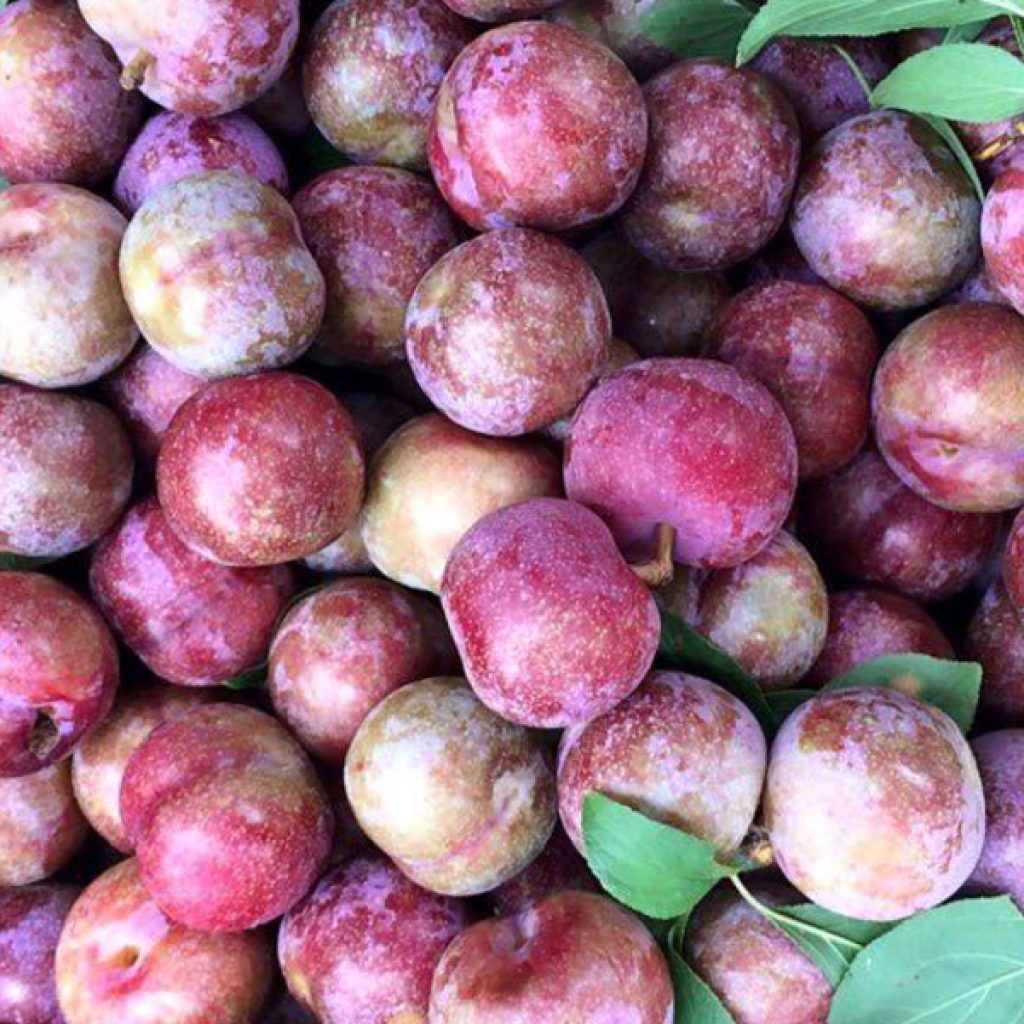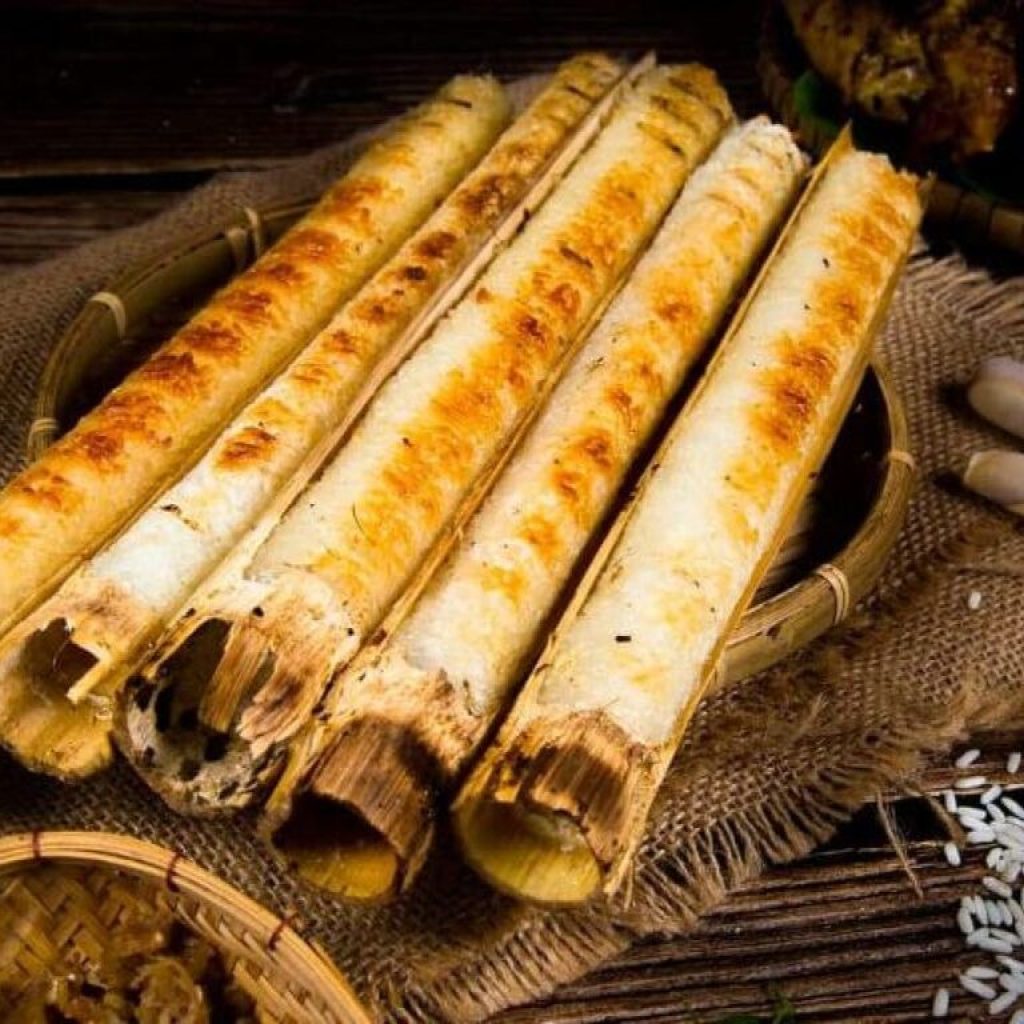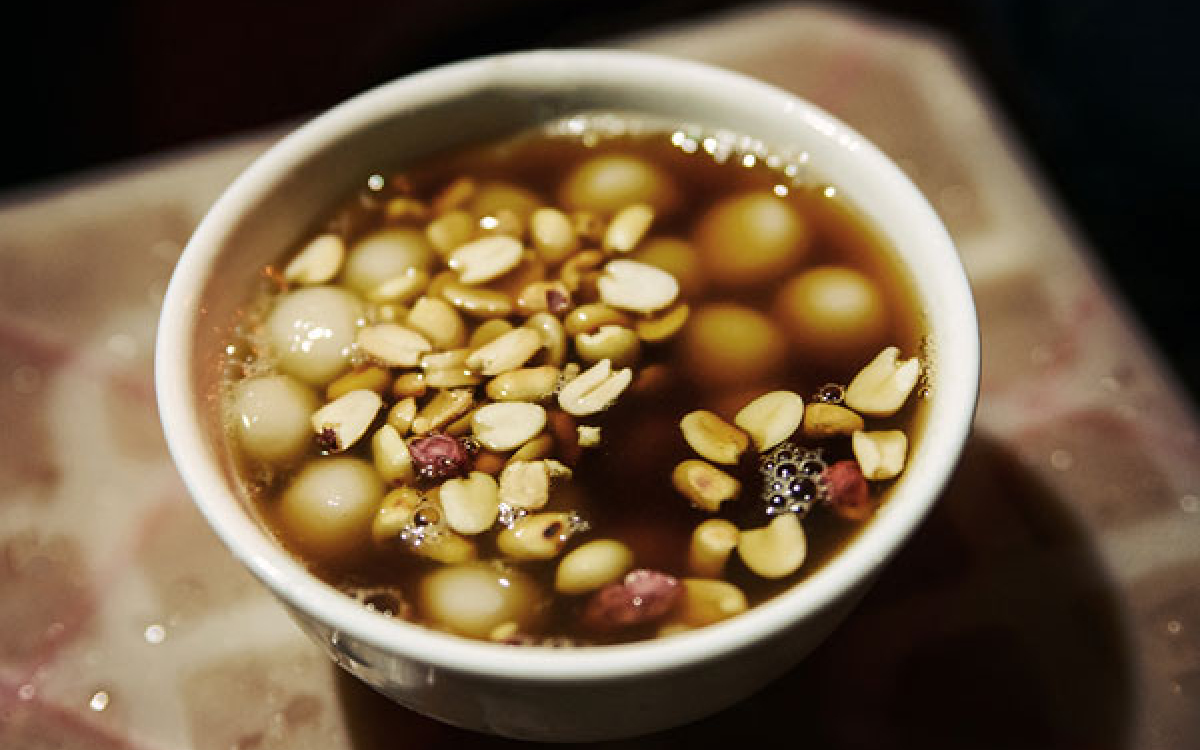Coming to Ha Giang, you will find many delicious dishes to enjoy. Each dish has its own characteristics, which will bring you different experiences in the rocky plateau. So let’s find out what those dishes are with Halo through the article below.
1. Ha Giang plums
Plums are grown a lot in the communes of Chien Pho, Po Lo Dan Van, and Thang Tin of Hoang Su Phi district, Ha Giang. This is a mountainous district with suitable climate and soil conditions, so this is the area where blood plum trees grow and develop well.
Red plums in Ha Giang are also known as blood plums or Chi Khay La. This is a typical fruit of Ha Giang and is sought after by consumers every season. Red plums are harvested in early June and ripen from the first week of June to early July. When ripe, the fruit will change from green to bright red. Ripe plums are plump, round and large, and when eaten, they will have a sweet, crispy, and juicy taste.

When mentioning Ha Giang plums, people will immediately remember Chien Pho plums – the place known as the capital of blood plum trees. In Hanoi, early-season Ha Giang red plums are being sold at 60,000 – 80,000 VND/kg. Previously, plums were grown in small quantities, but in the current period, realizing the economic value of plum trees, local people have expanded the plum growing area to earn more income.
Ha Giang blood plum trees are relatively easy to grow and are not picky about soil. Just dig up the seedlings in the garden, dig a hole, place the seedlings in the ground and cover the soil tightly. After 3-4 years of planting, the plum trees begin to bear fruit. After Tet, if you have the opportunity to visit the communes of Mu Cang Chai district, visitors will be able to admire and check in the white plum blossoms throughout the villages when going on a tour of Giang The time when the tree flowers and bears young fruit is also the time when the weather changes, there are hailstorms and storms, so this is the time when people focus on taking care of the trees. The people here tie the branches to minimize the fruit falling due to storms.
Hoang Su Phi red plum has become a famous specialty of Ha Giangknown to many people. With its high economic value, red plum has become the main source of income, helping people in the highland districts of Ha Giang develop the economy and reduce poverty. If you have the opportunity to visit Ha Giang in the plum season, don’t forget to enjoy red plums – a wonderful agricultural product of this highland.
2.Com lam Bac Me
Ha Giang on the tourist map of the travel world is known as a land blessed by nature with many majestic natural landscapes with overlapping mountains, the Nho Que river flowing through with a green color, or Tu San canyon – the deepest canyon in Southeast Asia.
Not only that, this Northeastern land also has a long list of delicious dishes made by the skillful hands of our ethnic brothers, so it has a very unique flavor. Besides specialties such as five-color sticky rice, au tau porridge or smoked sausage, Bac Me bamboo rice of Ha Giang is also a quintessential specialty loved by many tourists.

It can be said that Bac Me bamboo rice is one of the quintessential specialties of Ha Giang when it is made from the pearl rice grains of heaven and earth, where the terraced fields turn golden every September. Bamboo rice is now not only a dish, but has become a typical cultural feature of the ethnic groups in the Northeast region.
The dish has a harmonious and delicate combination of sticky rice and bamboo aroma, blended together when grilled on a charcoal stove. Unlike in modern cities, where rice is mostly cooked in electric pots and clay pots, the bamboo rice dish here is made of bamboo and reed tubes. “Lam” here means using bamboo and reed tubes to cook food. And thanks to this rustic cooking method, it has brought an attractive flavor to the rice dish that makes Bac Me Bamboo Rice so attractive.


1 Comment